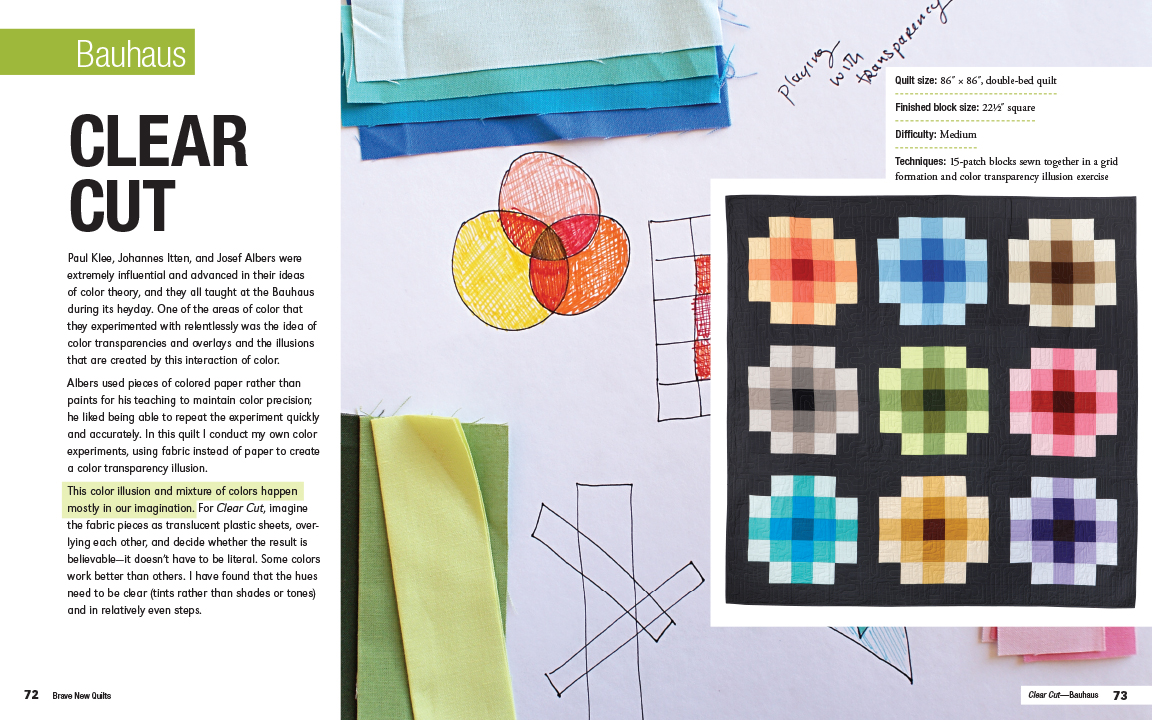I have been a professional photographer for nearly a decade, and I have photographed a LOT of stuff. Photographing quilts is at the very top of my “very difficult to photograph correctly” list and I haven’t met its match yet. There’s a lot of reasons for this, some obvious, some less so. This is my job - and making every image I create for publication top-notch is something I take very seriously. Let’s just say that I have definitely lost a lot of sleep over the technical aspects of quilt/fabric photography.
A follower of ours on Instagram asked for some technical information about the photograph shown below, which is found in Nicholas Ball’s new book INSPIRING IMPROV. I thought it was a good opportunity to make a quick blog post answering the question about this gorgeous ambient image we shot on location with Lucky Spool.
While we had a few locations for this book, most shooting was done at a cabin along the Northern California coast in a place called Sea Ranch. We spent two days there, and the joy of that meant I could be at the location and shooting right after coffee in the best light of the day - the Golden Morning Hour (the time about an hour -2 hours after the sun comes up.) Golden hour at either end of the day allows for that big, amazing light source in the sky (the sun) to be positioned exactly as we want it for most photography - at a great 45 degree angle. For quilts, it’s even more important - because in order to nicely show quilting we want to skim light over the quilt from the side angle.
The other nice thing about Golden Hour is that the position of the light and its diffusion in the atmosphere creates fabulous soft ambient light. It’s much easier to shoot because nothing is causing harsh shadows or hot highlights.
Remember, though golden hour makes things a lot easier it’s important to note that the sun is always a constant light source. You still need to think of it that way. You still need to position your subject appropriately. My favorite thing to do in morning light is to use the sun as a backlight/rimlight slightly turned in, so that it skims the quilt, throwing a soft, delicate shadow of the quilting. Here’s a terribly, fast drawn diagram:
It’s really hard to say this based on the really pretty location we were in for this particular shoot, but it’s a good time to tell you again: your photo is made by the light, not the location. When you’re outside, using the sun, remember that you are shooting with a light source that cannot be moved. That means you have to move around it. Do not focus on backdrops or locations. Focus on light. The final technical note on this photo is that this bench was under a different tree in the backyard that Kristy scouted as a beautiful backdrop for this and other photos for the book. It totally was beautiful, but it was at a position where there would never be good 45 degree angle sunlight and since we were sitting on a yard with tons of other plants and trees there was no reason to stay at that spot. Sometimes, we don’t know what is really going on at a location until we get there. So we picked this bench up and put it here, in the good light. ALWAYS FOLLOW THE LIGHT. See it, work with it, be rewarded. :)



















